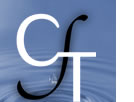 |
||||||||||
Notes from the CFT Library: Changing Practices in Evaluating Teaching
This article was originally published in the Fall 2003 issue of the CFT's newsletter, Teaching Forum.
Book Review of Changing Practices in Evaluating Teaching , Peter Seldin and Associates. Anker, 1999. 275 pp.
by Anupama Balasubramanian
The urgency and complexity involved in decisions on tenure, promotion and retention make many universities accept seriously flawed teaching evaluation programs. These programs judge faculty ineffectively, leading to damaging administrative decisions. One compelling reason, then, for institutions to develop more effective and equitable approaches to the evaluation of teaching is to provide a sounder basis for personnel decisions. Another vital reason is to identify areas that need improvement or change more comprehensively.
Such are the assertions by Peter Seldin and other contributors in Changing Practices in Evaluating Teaching , which offers university faculty and administrators ready-to-use and research-based information for fostering effective and reliable teaching evaluations. Speaking from their positions as department chairs and veteran university administrators, the authors reveal changes and emerging trends in evaluating teaching by comparing current policies and practices with those used over the past 20 years, and by exploring a large range of approaches, from electronic assessment tools to teaching portfolios and post-tenure review. Several aspects make the volume particularly useful. First, it grounds the evaluation of teaching in the analysis of student learning. Moreover, it supplies a bounty of concrete models, from case studies to tables, web sites to sample forms. In short, this book offers pragmatic, hands-on information about state-of-the-art techniques, important trends, and the use and abuse of specific evaluation strategies.
The first few chapters discuss the most commonly-used existing methods of evaluation, including student feedback and its effective (and ineffective) uses. Beginning with a study of policies and practices of evaluating teaching for tenure, promotion and retention decisions from a survey response of 600 academic deans, the study reveals that student ratings still have highest priority in evaluating teaching effectiveness. Self-evaluation, classroom visits, course syllabi and exams have gained currency in the evaluation of classroom teaching, as well. The key uses and misuses of student ratings are discussed and recommendations are given for their best use. Examples for improved use include encouraging consultations on student ratings data, or providing a grace period during the evaluation cycle for teachers new to the profession or new to the particular institution.
The next set of chapters discusses a wide range of additional evaluation in practice today, including peer classroom observation, self-valuation, post-tenure review, electronic classroom assessment, the use of the World Wide Web to improve evaluation, and teaching portfolios. For example, research shows peer observations of teaching offer critical insights that are needed to provide a fuller and more accurate picture of instructional effectiveness than allowed by student evaluations alone. Peter Seldin weighs reasons for using self-evaluation for personnel decisions and for improving teaching, citing barriers to their effectiveness and offering two successful, evidence-based models that rely on self-reflection and self-evaluation. Another approach, electronic classroom assessment, uses a six-component model to generate valuable feedback about the effectiveness of specific teaching strategies in helping students meet specific learning objectives.
The last set of chapters presents strategies for administrators to create and implement improvements in teaching evaluation processes, including approaches to impacting organizational and academic climates. In short, this book persuasively and succinctly addresses the pros and cons of various evaluation schemes, offers ways to uncover and understand the various causes of low evaluation scores, and suggests ways that different evaluation schemes can be used in combination to gain the best benefit. A synopsis of each chapter's key points, provided at the end of the volume, will enable readers to quickly grasp and later return to the sections of the book most useful to them.
HOME | ABOUT CFT | PROGRAMS | SERVICES | RESOURCES
Center for Teaching |
General Questions? Web Site Questions? Copyright ©2009 |
